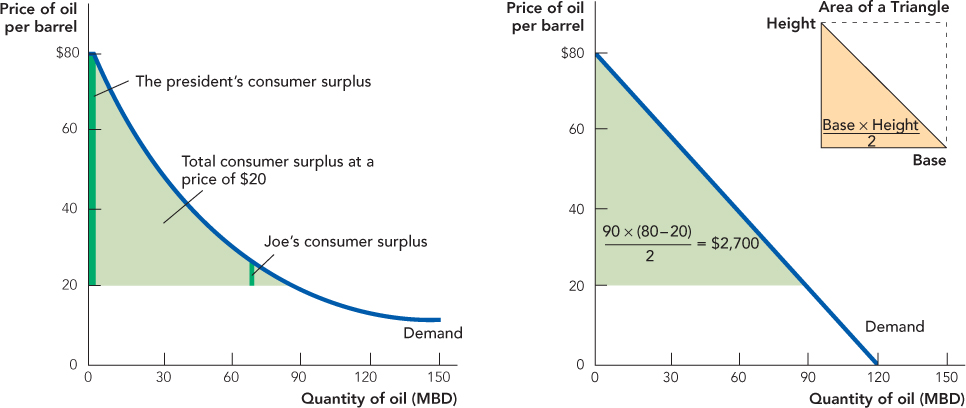Consumer Surplus
Consumer surplus is the consumer’s gain from exchange, or the difference between the maximum price a consumer is willing to pay for a certain quantity and the market price.
If a consumer, say, the president of the United States, is willing to pay $80 per barrel to fuel his jet plane but the price of oil is only $20 per barrel, then the president earns a consumer surplus of $60 per barrel. If Joe is willing to pay $25 and the price of oil is $20 per barrel, then Joe earns a consumer surplus of $5 per barrel. Consumer surplus is the consumer’s gain from exchange. Adding up consumer surplus for each consumer and for each unit, we can find total consumer surplus. On a graph, total consumer surplus is the shaded area beneath the demand curve and above the price (see Figure 3.4).
Total consumer surplus is measured by the area beneath the demand curve and above the price.
It’s often convenient to approximate demand and supply curves with straight lines—this makes it easy to calculate areas like consumer surplus. The right panel of Figure 3.4 simplifies the left panel. Now we can calculate consumer surplus using a little high school geometry. Recall that the area of a triangle is  . The base of the consumer surplus triangle is 90 million barrels and the height is $60 = $80 − $20, so consumer surplus equals $2,700 million (
. The base of the consumer surplus triangle is 90 million barrels and the height is $60 = $80 − $20, so consumer surplus equals $2,700 million ( × 90 million × $60).
× 90 million × $60).
